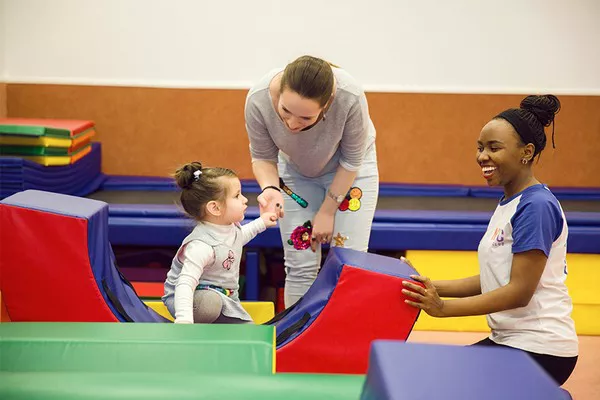Maintaining friendships is one of the most important aspects of life, contributing significantly to emotional well-being, personal growth, and social support. However, when life circumstances, such as work, school, or family commitments, lead to geographical separation, maintaining close friendships can become more challenging. Long-distance friendships, while deeply rewarding, often require more intentional effort to sustain. One common question that arises in these situations is: How often should I see long-distance friends?
There is no one-size-fits-all answer to this question, as the frequency with which you should connect with a long-distance friend depends on a variety of factors, such as the nature of your relationship, both of your individual schedules and preferences, and how the dynamics of long-distance friendship affect your emotional needs. This article explores the psychological elements of long-distance friendships, offers practical strategies for staying connected, and discusses how often you should aim to see or communicate with your long-distance friends to maintain a healthy and fulfilling relationship.
The Psychology Behind Long-Distance Friendships
Long-distance friendships are not inherently any less meaningful or important than friendships where people live in close proximity. In fact, research has shown that long-distance friendships can be just as fulfilling, if not more so, as those maintained through daily or frequent in-person contact. These friendships often involve deeper emotional connections, as both friends are usually more deliberate and thoughtful about how they maintain their bond. However, there are unique psychological considerations to take into account when managing such relationships.
Attachment Styles: A person’s attachment style, which is developed early in life, can affect how they maintain friendships. For example, those with a secure attachment style are generally comfortable with the space and autonomy that long-distance friendships require. On the other hand, people with an anxious attachment style might feel more disconnected or anxious when they are far apart from friends, leading them to feel insecure or neglected. Conversely, people with an avoidant attachment style may be more comfortable with distance and less inclined to keep frequent contact.
The Role of Communication: Communication is a cornerstone of any healthy relationship, but it becomes especially critical in long-distance friendships. The way we communicate with friends—whether via text, phone calls, video chats, or letters—helps maintain the emotional bond and provides reassurance of the relationship’s importance. In fact, research suggests that people who are successful at maintaining long-distance friendships tend to use a variety of communication methods to keep in touch, ensuring that the bond stays alive.
Emotional Fulfillment and Connection: Long-distance friendships often require more proactive efforts to ensure emotional fulfillment. Since you cannot rely on spontaneous meet-ups or casual hangouts, you must intentionally nurture your bond through thoughtful communication. This requires both individuals to share significant moments, vulnerabilities, and milestones, keeping the emotional connection strong despite the physical distance.
Idealization and Memory: Long-distance friendships can also thrive on idealization, where the bond feels more profound because the time you spend together is rare and valuable. The anticipation of reunions, combined with the ability to reflect on shared memories, often enhances the emotional depth of the relationship. However, this idealization can sometimes create unrealistic expectations, where one or both individuals feel pressured to maintain an idealized version of the relationship rather than being realistic about the limitations of time, energy, and geography.
Factors to Consider When Determining How Often to See Long-Distance Friends
The frequency with which you should see or communicate with long-distance friends depends on several key factors that are unique to your relationship and lifestyle. Here are some of the main factors to consider:
Personal Schedules and Commitments
Both you and your friend likely have busy lives, and this is especially true for long-distance friendships, where geographical separation often implies additional time and logistical barriers. Work commitments, family obligations, and other responsibilities may influence how often you can realistically meet in person or even how frequently you can communicate.
It is important to be realistic about each other’s schedules and acknowledge that maintaining a long-distance friendship requires flexibility and understanding. Communication patterns may shift depending on life changes, and it is important to set realistic expectations for how often you can connect. Being open and honest with each other about your availability and expectations can help prevent feelings of disappointment or resentment.
The Nature of the Friendship
The frequency of communication or visits will vary based on the depth of your friendship and the specific dynamics between you and your friend. For example:
Close Friends: If you share a particularly close or long-standing friendship, you may both want to make the effort to see each other more regularly, even if it’s only once or twice a year. You may feel comfortable discussing your personal life in great detail, and the bond between you may feel more substantial. In these cases, regular check-ins—such as weekly phone calls, or monthly video chats—may be a priority to maintain the emotional connection.
Casual Friends: If the friendship is not as deep or is more circumstantial, such as one you formed during a specific phase of life (college, work, etc.), you may find that you can go longer periods without communication and still feel comfortable. Casual friends may not require frequent communication or visits to maintain the connection.
The Quality of Communication
When it comes to long-distance friendships, it’s not just about frequency but also the quality of communication. For example, regular short messages might feel less meaningful than fewer, but more in-depth, conversations where both friends share their feelings, discuss life events, and emotionally engage. Video calls and voice notes can be particularly powerful because they allow you to see each other’s facial expressions, hear the tone of voice, and engage on a deeper level than texting alone.
While communication frequency can vary depending on individual circumstances, making the time spent together meaningful and intentional is key to keeping the friendship alive and strong. Scheduling “date nights” or regular video calls or even sharing something special, like sending a handwritten letter or a surprise gift, can significantly enhance the emotional fulfillment of your long-distance friendship.
Emotional Need for Contact
How often you should see or communicate with a long-distance friend also depends on your emotional needs and your friend’s needs. Some people may thrive on regular, meaningful contact, while others may be content with less frequent communication. Understanding and discussing each other’s needs can ensure that you both feel connected and valued, even when distance separates you.
A good rule of thumb is to gauge how much you miss each other and how much you feel emotionally connected when you are apart. If you find that you’re both eager to talk frequently and share significant moments, then more frequent contact is likely appropriate. Conversely, if the friendship feels strong even with less frequent communication, that’s perfectly valid as well.
The Distance and Physical Barriers
Geographical distance naturally plays a role in how often you can see each other in person. If your friend lives on the other side of the world, you might only be able to visit once a year or during special occasions. If they’re only a few hours away, however, you might plan for weekend visits or occasional meet-ups. The distance often dictates the level of effort required to make in-person visits happen, but technology has made it easier than ever to stay in touch virtually, which can help bridge the gap when physical visits are infrequent.
How to Maintain Long-Distance Friendships: Practical Tips
To keep your long-distance friendships strong and fulfilling, here are some practical strategies:
Set Expectations Early: Discuss with your friend how often you both expect to communicate. Are you comfortable with texting frequently or do you prefer more in-depth conversations less often? Understanding each other’s preferences and boundaries can help you avoid misunderstandings.
Regular Check-Ins: Try to establish a regular rhythm for staying in touch. This could be as simple as sending a text message once a week or having a monthly video call. If you both know when to expect your next catch-up, it gives you something to look forward to.
Celebrate Milestones: Even if you can’t be together physically, celebrate important milestones in each other’s lives. Birthdays, achievements, and personal challenges are all opportunities to show that you care, even from a distance.
Be Flexible and Patient: Life changes, and schedules may need to shift from time to time. Flexibility is key to managing long-distance friendships successfully. Be patient with each other and open to adjusting your communication patterns as needed.
Make Time for In-Person Visits: When possible, try to visit each other in person. These visits don’t have to be frequent, but making time for a reunion, even once a year, can be incredibly meaningful and help reinforce the emotional bond.
Conclusion
Long-distance friendships can be just as fulfilling as those maintained in close physical proximity, but they do require effort, intention, and a commitment to communication. How often you should see or contact your long-distance friend depends on your individual needs, schedules, and the nature of your relationship. The key is to find a balance that works for both of you—one that ensures the emotional connection remains strong while respecting each other’s time and personal commitments.
By setting expectations, maintaining meaningful communication, and making time for in-person visits, you can sustain a long-distance friendship that remains rewarding and supportive. Remember, the strength of a friendship is not determined by how often you see each other, but by the quality of the bond you share and the effort you both put into maintaining it.



























